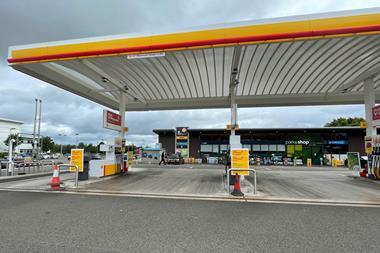After its predecessor, the Office of Fair Trading (OFT), gave the road fuels market a clean bill of health in early 2013, the Competition & Markets Authority (CMA) has ignored calls for a fresh inquiry and left the sector well alone. But two major deals mean it is now assessing businesses that between them own 18.5% of the UK’s forecourts and account for almost a quarter of the road fuel sold in the UK.
First up in January the owner of the UK’s second largest independent dealer group, MFG, agreed a takeover deal with the owner of its even larger rival MRH. The two companies currently operate 438 and 488 sites, according to Experian Catalist’s latest data. The CMA launched a merger inquiry in June and in August it announced its initial verdict (see panel). The likely outcome is that MFG will agree to sell off 29 sites meaning it will have just under 900 sites, or just over 16% of the entire dealer sector in the UK.
But while this is clearly a massive deal for the independent sector, and bigger in forecourt numbers, it is Sainsbury’s planned takeover of Asda, announced at the end of April, that could cause major changes to the dynamics of the UK road fuel market. Although the big four supermarkets only have 18.5% of the forecourt sites in the UK (1,557 out of 8,418), they hold a 44.7% share of the volume. Tesco is the clear leader with 505 sites and 16% volume, meaning its market share is greater than any of the big three oil brands, with BP on 14.3%, Shell on 13.7% and Esso’s 12.3%.
Sainsbury’s has 311 forecourts with a 10.2% market share, and Asda 320 sites with a 7.7% market share, making the combined entity the market leader, if the CMA were to allow it to hold onto its joint share of 17.9%. This would clearly give Sainsbury’s major muscle in the market, but consumer groups and motoring organisations are even more alarmed by the potential loss of Asda, and its perceived influence on pricing.
At various times campaigners such as FairFuel UK, and motorists organisations such as the RAC and AA, have all praised Asda’s influence on the market, suggesting that where it is present its low prices help to depress prices over an entire local market. Asda also applies a national price cap, unlike the other supermarkets which tend to set prices depending on local pricing. This means there can be a large disparity between the cheapest and most expensive Sainsbury’s sites, and FairFuel UK fears Sainsbury’s influence could soften pricing policy if the deal is concluded.
In a letter to Andrew Tyrie, chairman of the CMA, Robert Halfon MP and FairFuel UK’s Howard Cox warned: "Pump prices across Asda’s and Sainsbury’s outlets can differ by as much as 5p within just 30 miles. Across the UK the difference is even more marked at 12p. So, will the merged business take this opportunity and pick the highest of each other’s prices?
"With 50% of all fuel sold through supermarkets, this merger could impact severely on the cost of filling up for the already highest-taxed motorists in the world."
They conclude: "With this imminent merger, it’s even more vital that an independent pump price monitoring watchdog is created, to ensure pricing transparency is guaranteed."
RAC fuel spokesman Simon Williams said: "While there is clearly potential for fuel prices to be set at the same levels at both stores’ forecourts, we are hopeful that, as long as both brands continue to trade separately, they will carry on using fuel prices as a way to attract people into their stores. In addition, as both supermarkets have quite different customer bases, with Asda competing in the discount space, it will still have a desire to offer cheaper fuel, as this is something its customers have come to expect.
"We know fuel price competition between both brands is currently responsible for some very low prices in certain areas of the country, such as Taunton in Somerset, where prices are often 10p lower than the UK average. We strongly hope these very welcome ’low price’ anomalies will not be the first casualties of the merger."
On August 23, the CMA announced that it would be holding a formal investigation into the deal and said it would be looking at all areas of the businesses including fuel.
Meanwhile, another hurdle that could scupper the deal has been reported by The Times. It said analysis shows that there are at least 300 catchment areas where the merger could run into local competition concerns. The deal might look far less attractive to Sainsbury’s if it had to sell sites to its main rivals.
While a conclusion of the MFG deal was looking imminent as Forecourt Trader went to press, it looks as though the Sainsbury’s inquiry could drag on into 2019.
MFG closes in on completion
As Forecourt Trader went to press MFG was expected to agree to sell 29 sites in order to complete its takeover of MRH. The CMA found that competition provided by other major petrol retailers would ensure the merger would not result in higher prices for motorists across the country.
However, it identified concerns at 29 locations where MFG and MRH were close competitors, and where the takeover could result in prices rising for local motorists. MFG was given until 7 September to address the CMA’s competition concerns. If it was unable to do so, the merger would be referred for an in-depth (Phase 2) investigation.
MFG’s management welcomed the CMA decision, describing it as an "important positive step in the acquisition of MRH by MFG". William Bannister, MFG’s chief executive officer, said: "The CMA’s findings were in line with the expectations of the MFG board. MFG has cooperated closely with the CMA to assist in their analysis and the fact that concerns have only been identified at 29 locations means that action can be taken quickly to remedy these anti-competitive areas of concern. We now look forward to developing our business as the UK’s largest independent forecourt operator."





























No comments yet